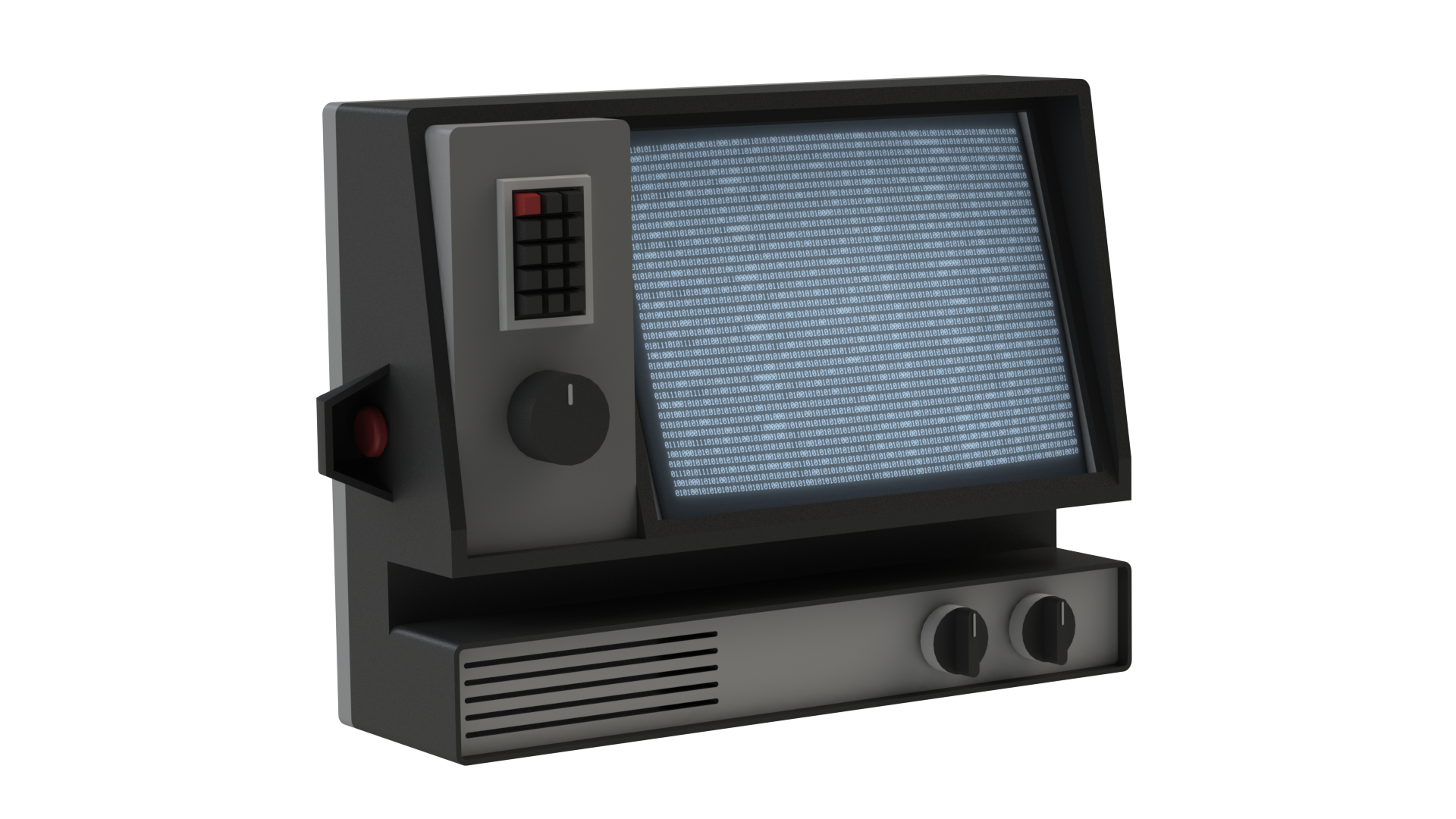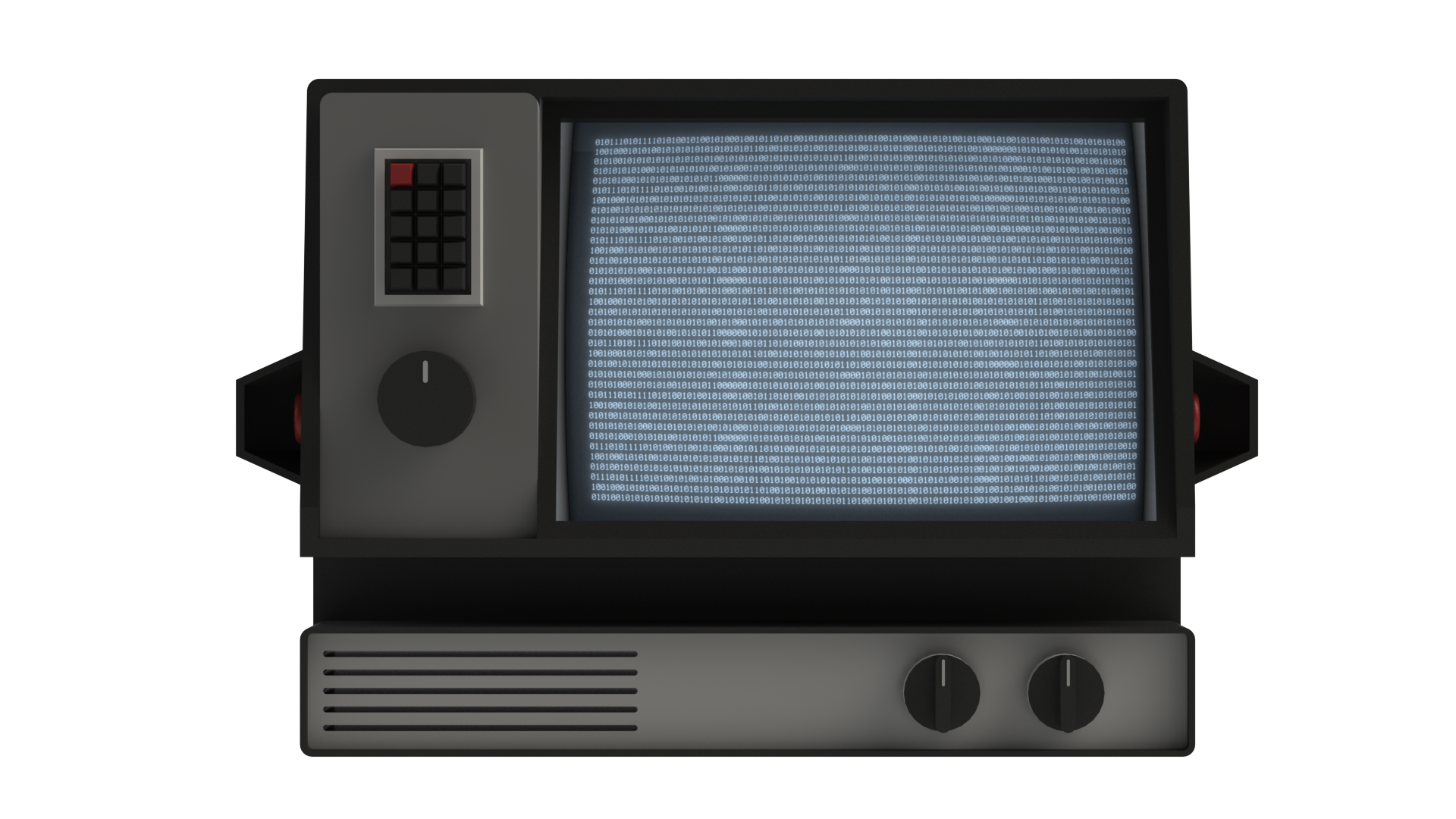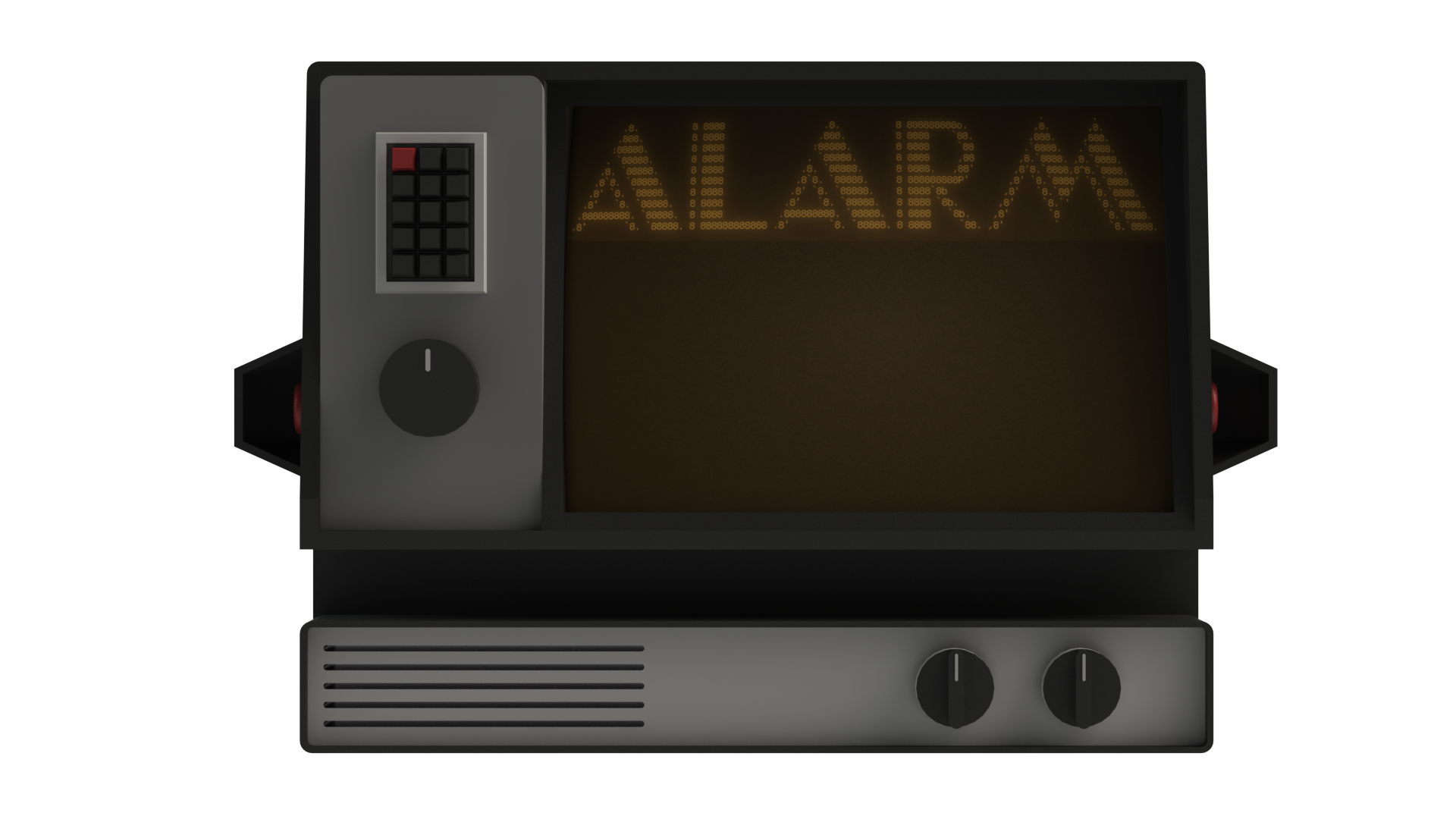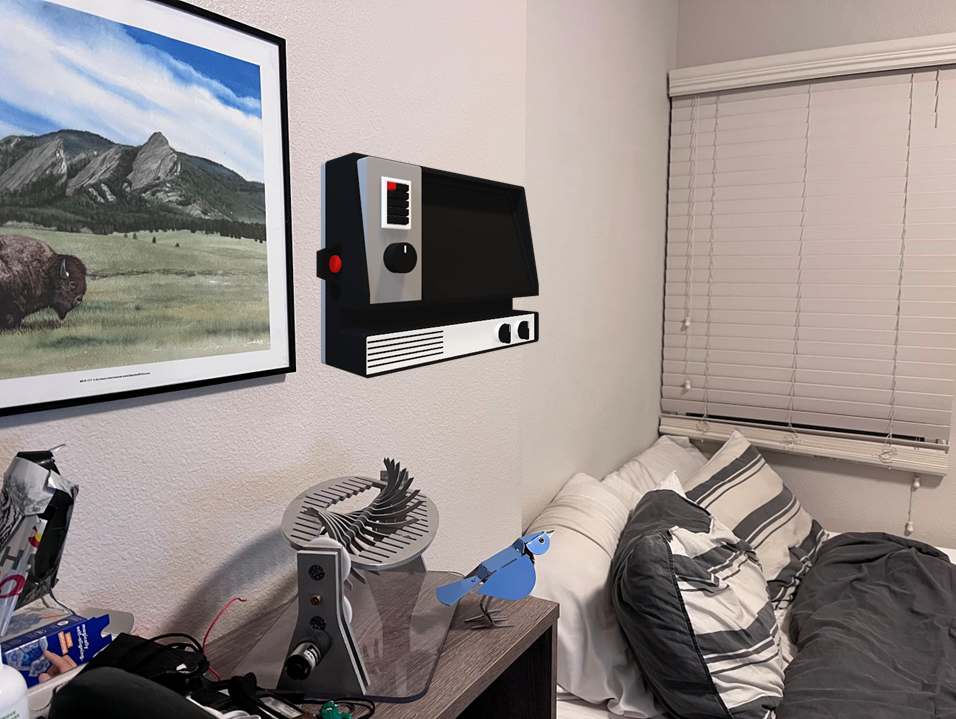Casette Futurism Alarm Clock
My goal for this project was to draw inspiration from my project and distill it in to a design for an alarm clock. The original goal was to build a functional alarm clock, but I slowly scaled back the project to focus on just the aesthetics. What I have produced is a mock-up of aa design I can create later. My effort went in to researching and iterating on this design to both achieve all functionality I intended while adhering as closely I can to the aesthetic. What I have produced is final renderings of the exterior design and an initial idea for the alarm sequence using a Python program to display a sequence of text to a stylistic terminal.
Functionality
I have carefully selected what user inputs will be required to operate this alarm clock. I have also considered how a device in this time period/aesthetic will function. My main inputs are: a keypad, a dial, two turn switches, and a two-man rule red button system. The keypad will allow users to input numbers to change values such as current time, time the alarm should go off, and other parameters. The dial is an additional input that can be used to smoothly adjust parameters such as volume and brightness. The two turn switches are for on-off switching of the power (left) and the screen (right). These will be more clearly labeled in the future. The two-man rule red buttons are for turning off the alarm in the morning. Using this system, commonly used in emergency stops and situations where erroneous input needs to be avoided, the device will require the user to use both hands to shut off the alarm by requiring both buttons to be pressed at once. This ensures the user can not simply “sleep” the system and roll back in to bed. It requires the user to face the device directly and use both hands simultaneously., This ensures the sure is in a state of alertness once the alarm is shut off and will increase the effectiveness of the alarm.
The internal electronics will consist of a Raspberry Pi, to control the alarm clock functionality and connect to the internet, and a microcontroller, to interface with the analog inputs (buttons, dials, etc.). The Raspberry Pi will run the main Python alarm program and continuously output to the stylistic terminal. A custom program will allow for future upgradability and to allow full customization, with the user being able to include any sound as an alarm.
Final Renderings

Isometric View

Forward View

Forward View with Alternate Screen
Terminal Display and Alarm Sequence
This section is still being completed and along with the poster will be finished for expo. The video I have created for the alarm sequence will be uploaded to Youtube and linked here.
Future Work
My next steps for this project will involve turning this stylistic model in to a real, manufacturable model. This will require sourcing parts, measuring them, and implementing them in to the model so everything is color matched and to scale I will then assemble the electronics and figure out how much space they will require. With these two steps done, the final model can be created and 3D printed. I can then finish the main Python program to fully operate the alarm clock and allow me to interact with the device using the buttons and dials.
Concept Image of Device in Room


1 Comment. Leave new
Wow Nic, very cool! I like how you recognized the constraints it would take to build this, and instead took the time to really create a very nice digital mode. Now you can very easily transition to make the physical product. I like the idea of a two-man switch. Thats a great way to get the user out of bed. You also very well capture all the functionalities needed with your button inputs.